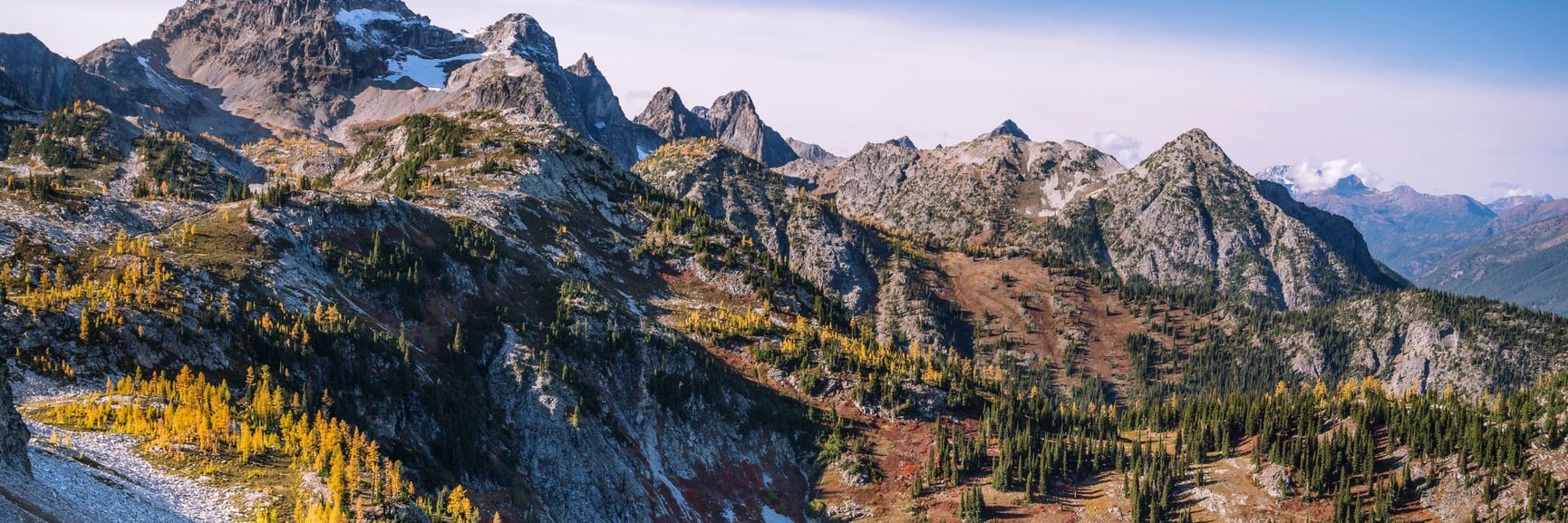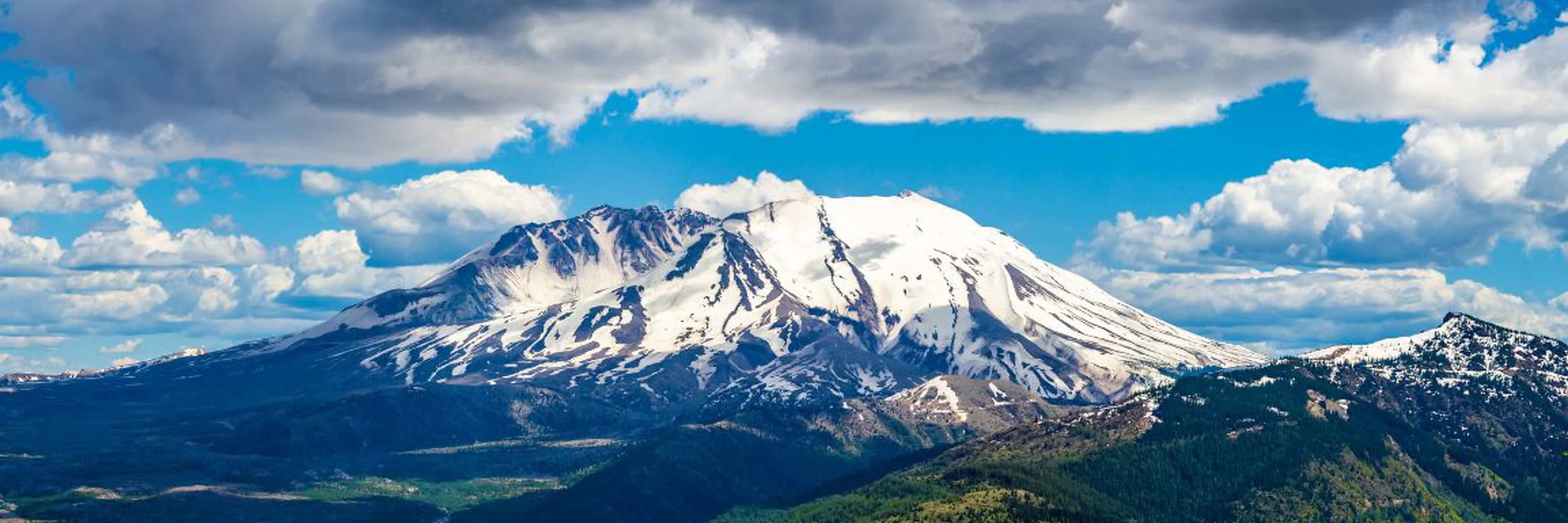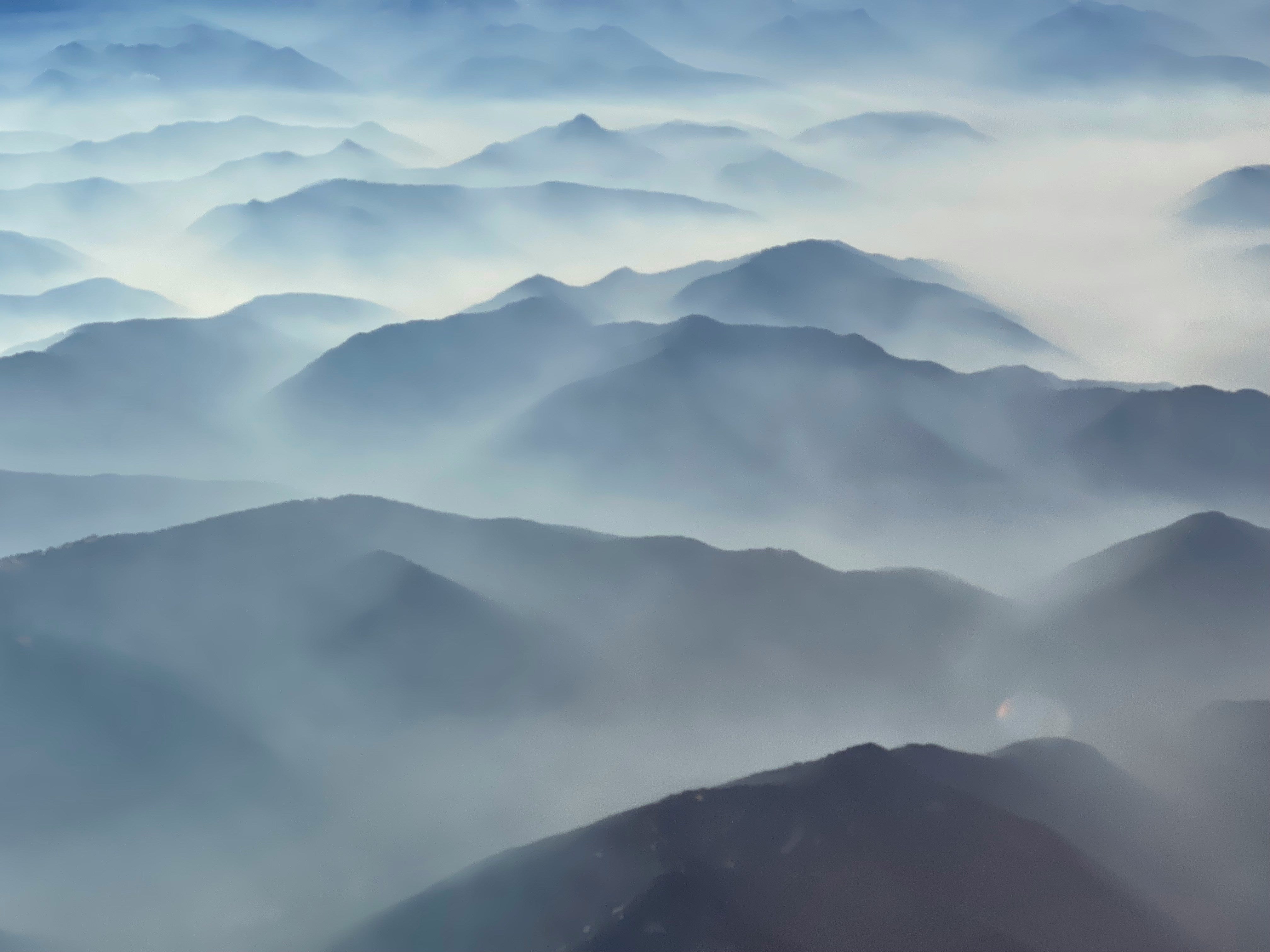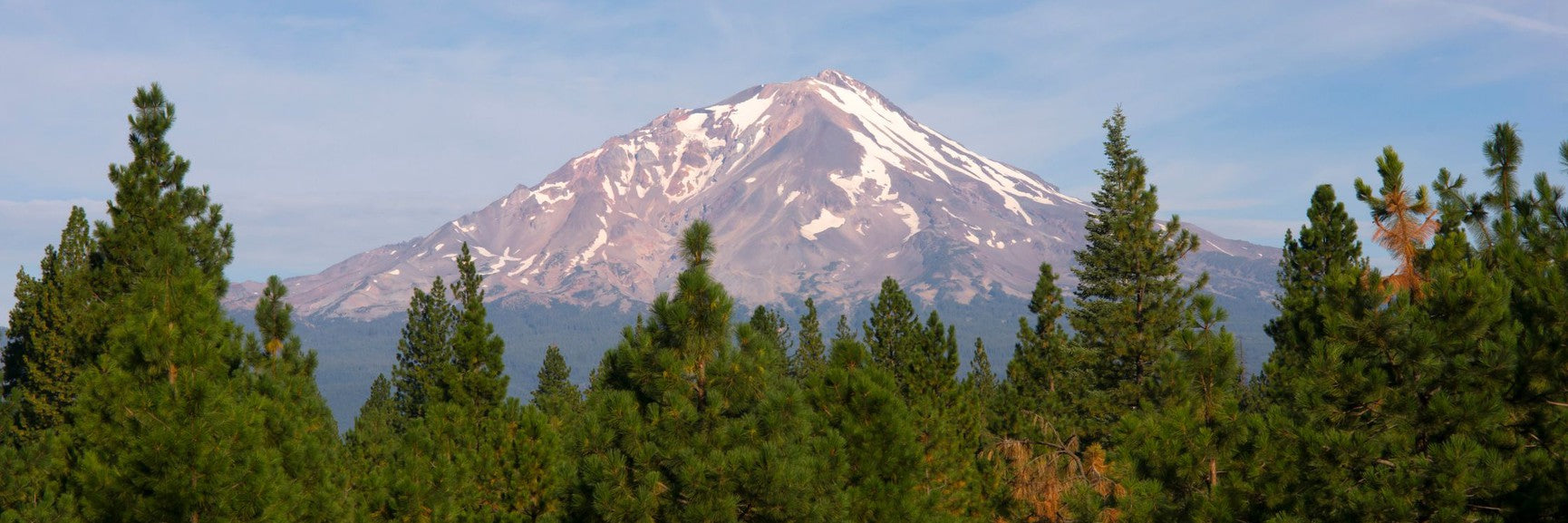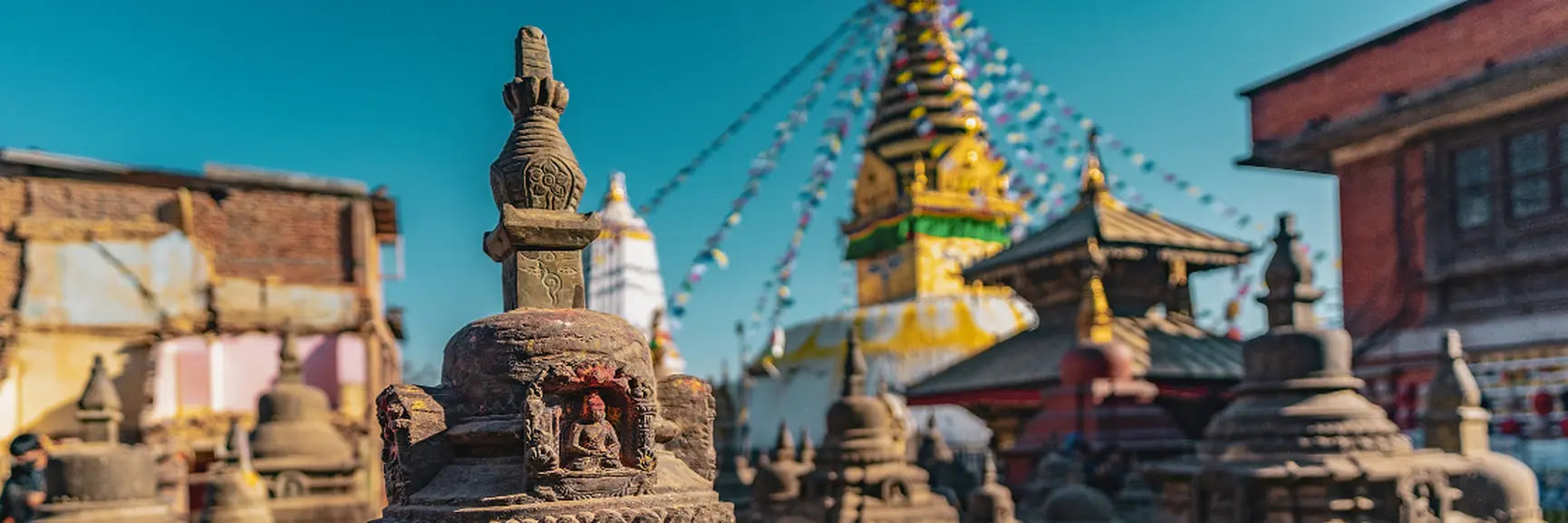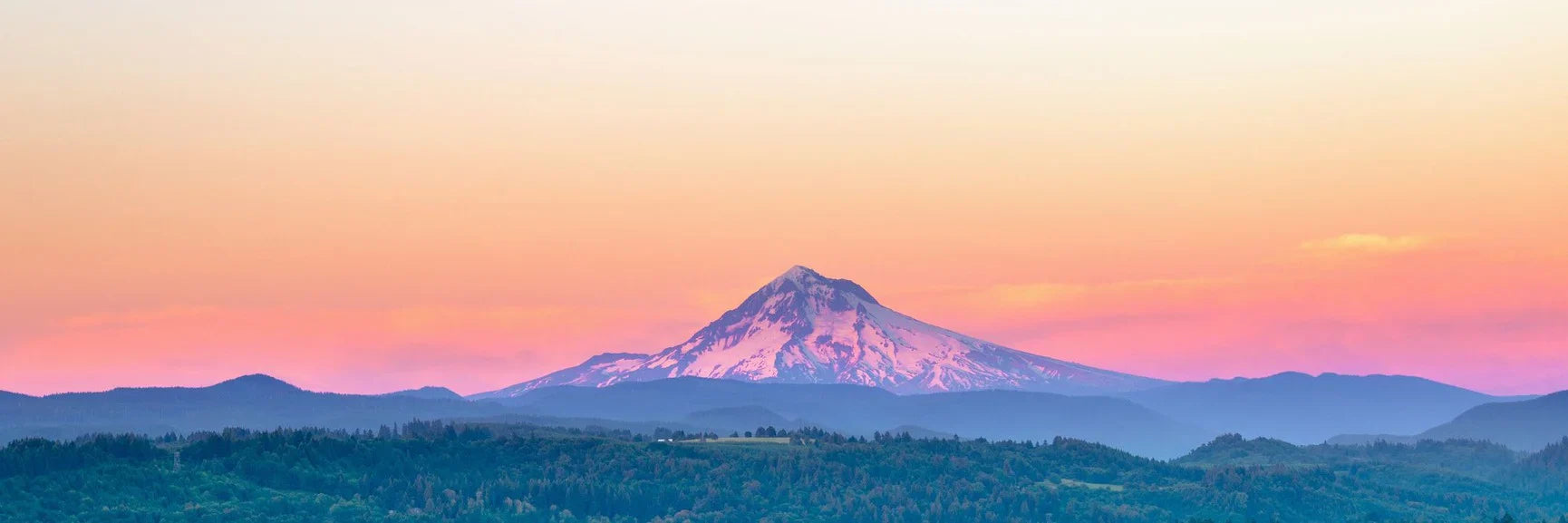A common sight against the stunning landscape of the Himalayas are the bright and vibrant Prayer Flags blowing in the mountain breeze. These cloth flags are often strung along mountain peaks and paths, or can be in sacred, religious and historical places. They provide a bright and vibrant contrast to the stunning landscape.
The Origin of the Prayer Flag
As part of Tibetan traditions, prayer flags were used to perform healing rituals, a practice which, over time, evolved into including Buddha’s prayer and developed further into what can be seen today – an endless array of Prayer Flags with lots of colour, symbols and mantras, each with deep meaning.
Today, there are two types of Prayer Flag, horizontal and vertical. The horizontal Prayer Flags are the most common and are made from squares connected along the top edges with a long thread to allow them to blow in the wind. The vertical Prayer Flags include single squares being sewn on to poles and then planted in the ground or on roof tops to blow in the breeze. It is important for the flags to be able to blow in the wind as it is believed by the Sherpa people that the prayers can be blown upwards as offerings to their deities.
Most traditional Prayer Flags are made in Nepal and India by Buddhists, but there is a cultural significance of the Prayer Flag by many of the diverse cultures in the Himalayas.
The Cultural Significance of the Prayer Flag
Despite the differences in ethnic background between the different cultures in the Himalayas, the practice of hanging the Prayer Flag is embraced by Buddhists, Hindus and even non-religious people. The hanging of the Prayer Flags is known to be a deeply reflective and personal act. It is seen to connect with the divine and seek protection whilst also creating a sense of peace, mindfulness and spiritual connection, regardless of individual belief.
The Prayer Flags hold lots of deep meaning from the balance of their colours, their symbols and their mantras. They are hung to allow them to blow in the wind, allowing the blessings and prayers to be released into the atmosphere. They are made of cloth which is left unhemmed to allow it to fade and fray over time, further releasing the prayers into the universe and representing the inevitable passing of all things. Once they start to wear, they can be replaced by new flags, these can be placed on top of the old ones. However, it is more common for them to be burnt as the Sherpa people believe it releases the final blessings into the air.
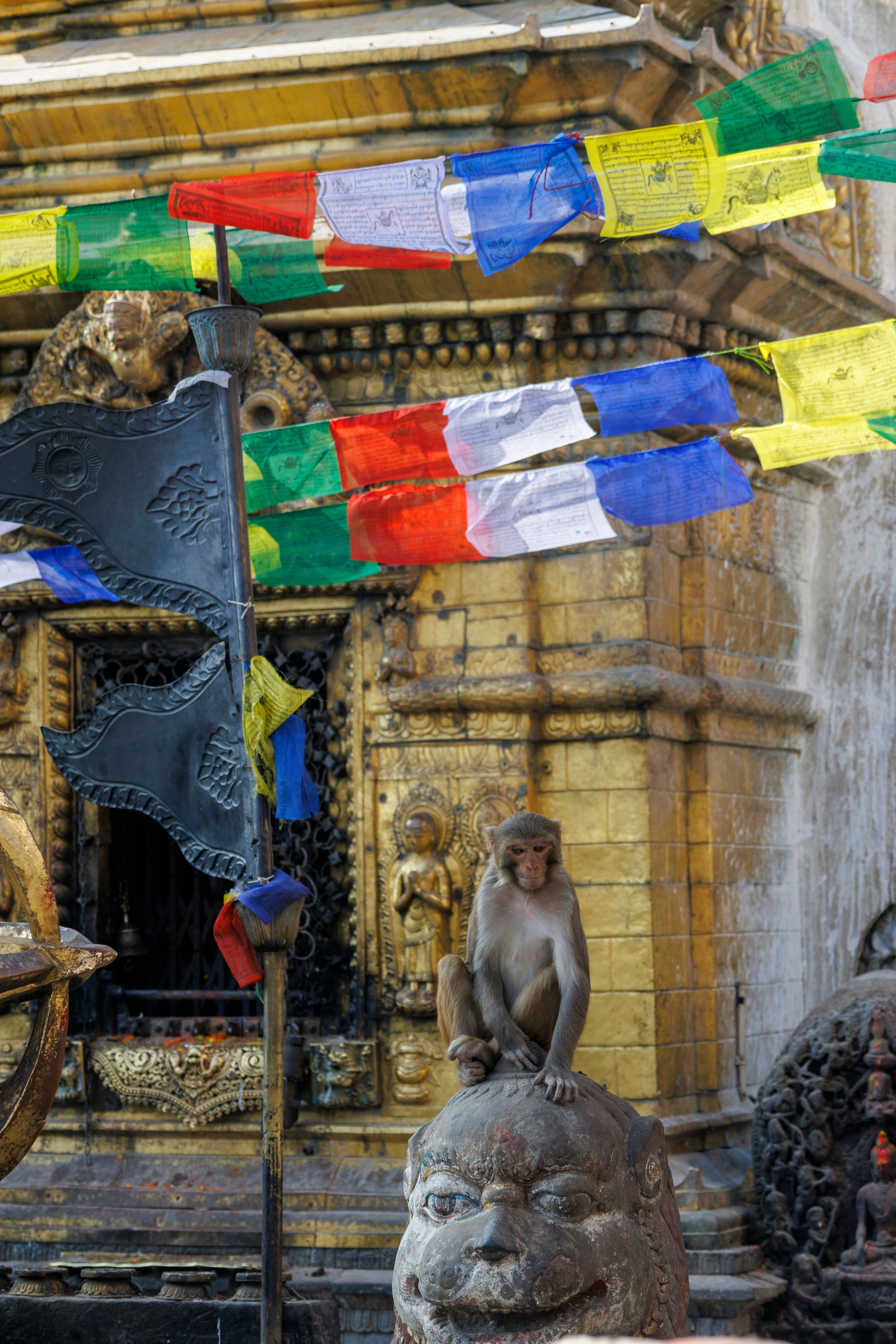
The Colours of the Prayer Flag:
The five bright and vibrant colours of the Prayer Flags are arranged in a specific order (yellow, green, red, white and blue) and have significant meaning, with each colour representing an element.
- Yellow symbolises earth, representing stability, fertility and the grounding aspects of life.
- Representing water, green symbolises harmony, balance and the nurturing qualities that water possesses.
- Fire is represented by the red in the flags, it is linked to energy, passion and transformation.
- White symbolises the air and the wind, commonly associated with purity, compassion and the breath of life.
- The sky and space are represented by blue, symbolising vastness, open-mindedness and the infinite nature of the sky.
It is important to get the balance of these colours right, as the correct balance of each is believed to produce health and harmony.
The Symbols of the Prayer Flag
In addition to colours, Prayer Flags commonly have symbols and icons added to them for additional layers of meaning. The centre of the flags often depict a Lungta (or a wind horse) which represents speed and the transformation of bad fortune into good. Buddha, the Dharma (Buddhist teachings) and the Sangha (the Buddhist community) are shown through the three jewels carried on the Lungta’s back.
Four sacred animals are shown in the corners of the flags. The Dragon, the Garuda, the Tiger and the Snow Lion. The Dragon represents strength and protection due to them being powerful, celestial beings to ward off evil and bring in good fortune. The Garuda represents wisdom and the ability to see things clearly, the mythical bird is known for its keen perception and excellent vision. The Tiger is seen as a guardian and protector, instilling courage and power, signifying confidence and strength. The fourth animal shown on the flag, the Snow Lion, represents fearlessness and joy, this creature embodies the qualities of happiness, free from fear.
Mantras of the Prayer Flag
After the colours and symbols, the Prayer Flag can be covered with around 400 mantras. Prayers for a long life of good fortune are often included for the person who mounts the flag. One of the most common mantras is “Om Mani Padme Hum” and each syllable carries a deep spiritual meaning. “Om” purifies the ego and the body, “Ma” purifies jealousy and the speech, “Ni” purifies passion and the mind, “Pad” purifies ignorance, “Me” purifies greed and “Hum” purifies the heart and the spirit.
To commemorate the Himalayan history of the Prayer Flag, Sherpa Adventure Gear uses designs and colours inspired by the Prayer Flags within many of our clothing styles and accessories, including on trims and zipper pulls. Sherpa Adventure Gear proudly features the Tarcho Tee, an item of clothing that is inspired by the beautiful and vibrant tradition of the Prayer Flag.



